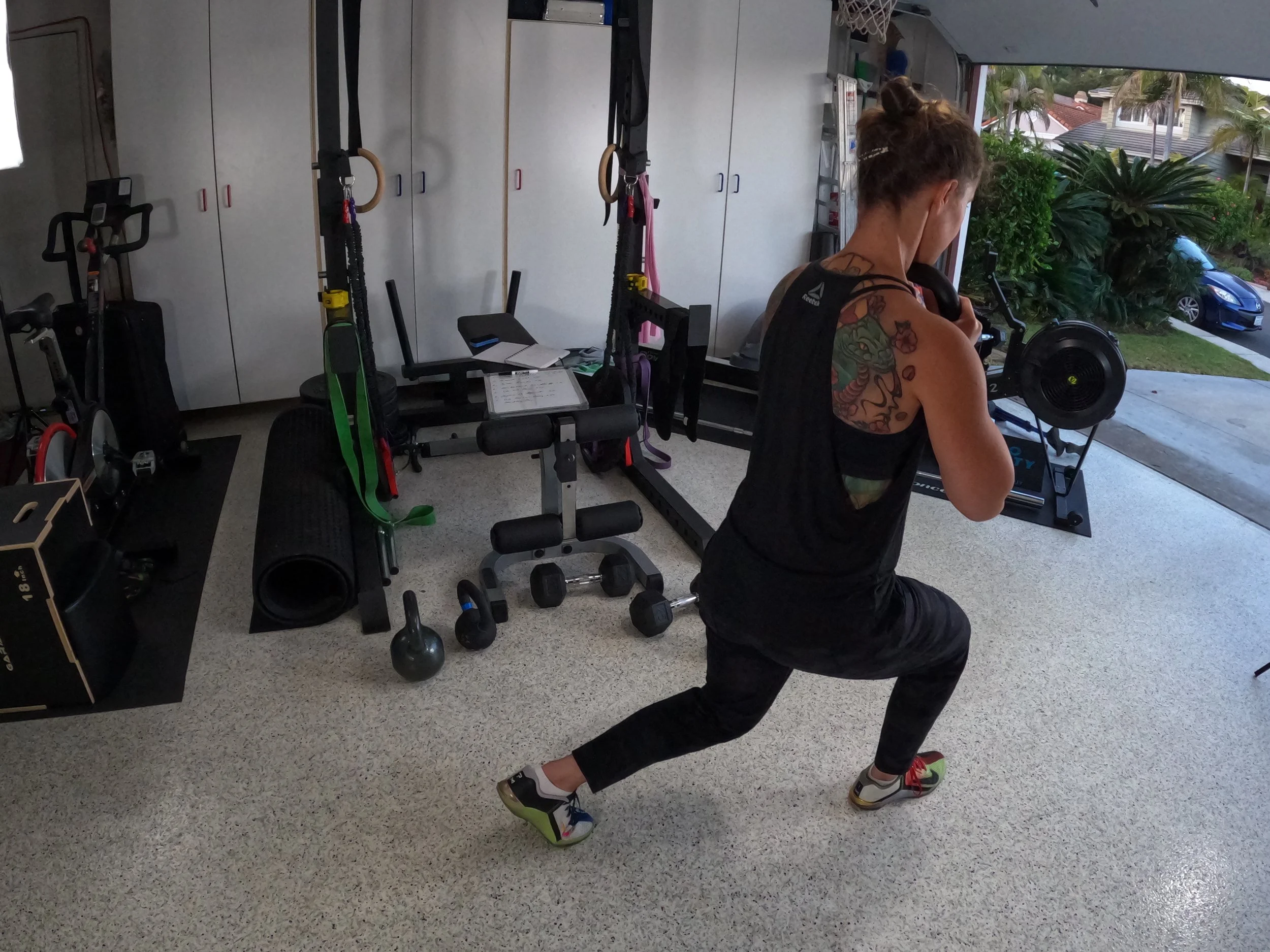
Complex Pain Progressions (CPP)
Frustrated or unsure about how in the world to exercise with complex chronic pain? End up with intolerable blowback, exhaustion, crashes, frequent or unpredictable flares every time you work out that just makes you want to give up? I get it, I’ve been there, and I can help.
I created Complex Pain Progressions (CPP) because too many of us feel like flares are inevitable with movement and it always leads to more pain, leaving us feeling like exercise is impossible and that losing those parts of ourselves is just an unavoidable part of our disease…
But it does not have to be that way. There are so many things we actually can impact as patients, we just have to know HOW, so we can do more over time with less blowback. There is a way to exercise smarter so it actually helps you in the ways it should despite complex pain, and this program will teach you how.
Movement is imperative to restore and maintain function, desensitize, down-regulate your nervous system and off-set atrophy, bone disease, compensation patterns and a host of other health and emotional issues that being sedentary doesn’t help. We know this, yet complex pain patients are rarely given the tools and support to actually have successful experiences with movement so they can gain confidence and change the default state their nervous system has gotten into, and the underlying cracks in our foundation.
There are unacceptable gaps between need, knowledge and access when it comes to movement and fitness. We as chronic pain patients too often feel that we don’t belong in this space, a PT doesn’t get it, and a typical trainer or coach definitely doesn’t. I built RWC to change that narrative. We can and do belong. There is a method to the madness with using movement to further desensitize our pain response with complex pathologies. With proper programming principles and techniques, we can successfully build underlying stability, and successfully progress strength and aerobic exercise in a way that actually decreases pain over time - which is the true power of movement in this setting.
You can change the way you feel during and recover from exercise despite complex pain. But neuroplasticity and improved motor control doesn’t happen from just doing more reps or weight.
I will teach you the key dial movers and exact principles I use with my 1:1 clients around how to move more with less flares and fatigue, and improve exercise intolerance - whether it be in certain positions like we talked about in Sensory Solutions, or to certain types of movement overall.
You’ll learn how to progress and pace exercise, adjust volume, better understand the types of movements you should include or avoid, and assess a number of other considerations with your nervous system and context that affect recovery, tolerance and program design.
WELCOME TO COMPLEX PAIN PROGRESSIONS (CPP).
Join the movement below!
“Movement is for every body. Period.”
— Justine Feitelson
What does the Movement portion of the MARSMethod include?

When I was dealing with Complex Regional Pain Syndrome and trying to save the function of my leg earlier in the disease course, I couldn’t find anyone who really understood what I was dealing with and could help from a movement perspective... So I set out to change that.
Representation matters. Exercise with chronic pain, let alone more complex forms of it, can seem impossible. It sure did for me. It took years of trial and error, mistakes, personal experience, and education around movement to create what became the MARSMethod and this group program on exercise for complex pain patients.
I am incredibly proud of the impact I've made and work I've done with patients, but my work 1:1 through mentorships, individualized programming and private sessions, is still not accessible enough for many of us. Enter, Complex Pain Progressions. A way to get everything I teach my 1:1 folks, without working with me 1:1.
What Will You Learn? Check Out the CPP Curriculum.
Week 1: The MARS Method
Identify and improve the behaviors and environmental factors that are making it much harder to layer in movement successfully. We’ll cover all the basics around how to make crucial changes in nutrition, sleep/recovery, energy management and mood, so you can create more capacity, and decrease stress.
Week 2: Your Brain on Exercise
You know exercise is important but do you realize how impactful it is with regards to our brain health, mood and other aspects of our nervous system besides body composition and movement quality? Movement is a primary way we show up in and navigate the world, and losing it has more downsides than you think. Let’s get it back!
Week 3: Breathing
The most fundamental movement pattern is where we will begin with movement! Being able to breathe diaphragmatically at rest, help us manage our nervous system, and create the appropriate stability that then translates to how we breathe and brace during movement is crucial to manage our fight or flight.
Week 4: Programming Considerations
This is where I get to open up my playbook to you! How do I design programs for 1:1 clients? What am I taking into account and why depending on what type of pain they’re in and where? How do we want to structure and transition from workouts and organize them?What movements are better or worse so we manage toll?
Week 5: Reflexive Stability (Lower)
Now that we understand the lay of the land conceptually, we can start to work on stability before we introduce frameworks for strength and aerobic. We don’t want to build a house of cards on a foundation with a bunch of cracks! We’ll start with lower extremity since that is where we begin getting information from the ground and make movement decisions up the chain.
Week 6: Reflexive Stability (Upper)
Do you have an upper extremity compensation or pain? Your turn! The truth is we all can improve our brain mapping and joint identification typically when it comes to our upper bodies, even if that’s not our primary place of dysfunction, it can be driving issues elsewhere in the chain or increasing anxiety, causing migraines, vision issues etc.
Week 7: Aerobic Progressions
Different forms of movement are like different languages to our nervous system. How to we progress aerobic zone 2 cardio sustainably, and increase the challenge over time without increasing pain? Learn how to use MAP principles to gain tolerance and desensitize appropriately before increasing volume so your body can freak out less at increases in intensity.
Week 8: Strength Progressions
Saved the best for last! Contrary to popular belief, I am not a meat head lol but I do love to express myself through pushing heavy things around. But exercise selection and progression is really tricky with complex pain and though there are many ways to skin a cat, there are clear principles to making sense of what you should and should not do.
You’ll learn how to integrate my unique and tested methods into your movement practice: 👇
Increase your capacity for movement: Learn the supporting fundamentals of the MARSMethod not only in our week one call, but in a parallel email series as we go through the group course so you continually progress what we learned early with regards to awareness, recovery, and stress and continue to improve your resilience and tolerance so you can layer more movement in as we go.
Build out your ‘why’ and motivation: Connect daily movement habits to your overall goals and seeing how much you can actually impact it is what creates drive. Growth happens on the continuum of challenge versus support. This is where we create the safety to push more.
Develop proper breathing mechanics: Diaphragmatic breathing is a crucial part of being able to manage your nervous system at rest and support your body during movement as you increase challenge and intensity. Dial in your fundamentals and learn how to progress long-term so it helps the way you manage your nervous system, experience anxiety, and recover.
Build underlying stability: Build true reflexive stability using unique neuro brain-based techniques and sensory strategies to change the way your brain uses parts of your body its learned to work around, so you clean up cracks in the foundation and can actually build strength on top with less pain, stiffness, spasming etc. from inhibited/weaker parts of your body being unable to engage when you load them.
Sustainably progress cardio and strength: No more crash and burn cycles and overwhelming fear of movement. Learn how to approach progressive overload the right way, with your nervous system and sensitization, tolerance, etc at the center of the considerations, and frameworks for conditioning that allow you to slowly let your body adapt and adjust sustainably.
Add yourself below to the wait list to make 2025 your strongest year yet!
Who IS this for? Are you a complex pain warrior who:
Is struggling to become more active and have chronic back, limb or joint pain that has made it more and more difficult to exercise
Has complex conditions other fitness folks don’t know how to work with like:
HSD/EDS (hypermobility)
Complex Regional Pain Syndrome or other neuropathic pain conditions
Central sensitization diseases like Fibromyalgia
Chronic Fatigue Syndrome
Dysautonomias like POTS
Surgeries like SCS, ports, pumps, scar tissue etc. that affect movement
Get unmanageable pain from working out and have become sedentary to avoid flares
Don’t know how to progress aerobic or resistance training without increasing pain and de-conditioning is a concern
Are unsure where to start with movement as far as the type or selection of exercises
Lack comfort in a lot of positions like sitting and standing you don’t know how to work around
Have been told you need to move as much as possible but have no idea where to start
Have hit a dead end with typical desensitization strategies or therapies to control pain
Are not meeting your goals with physical therapy or you feel you’ve exhausted your clinicians toolbox
You’ve graduated from Base Camp and are ready to shift into more of the movement part of the MARSMethod
Who is this NOT for?
Patients who’ are not yet ready to take on a complete movement program and need to work on more desensitzation and lifestyle factors first to create the capacity to be able to layer movement in more successfully. That is totally OK! That’s why I created the Base Camp group program - to get some of those underlying pieces more out of control first. If that is you, please join the wait list for that program!
Details and Dates:
Our calls will be on Wednesday evenings at 4pm PST, 7pm EST, on Zoom.
We begin Wednesday, November 13, 2024. The program will run through the week of Jan 8th, 2025 (as we will take the Christmas week off and it will serve as an extra integration week)
I will not run this again for another year, so please don’t miss out on this opportunity to create changes that will far outlast our time together and carry long into your future decreasing pain and living a larger life.
Call structure:
Each week there will be a ~2 hour call where we talk about how things went last week, cover this weeks topic, and then open up the rest of the call and any other questions.
Even though it’s a group program, the application is still individualized. This is a safe space to make authentic, meaningful connections and meet other awesome warriors with similar goals and challenges. Calls are an opportunity for you to not only learn from me, but learn from other participants and get to know each other as you work through implementation together.
All calls will be recorded and sent out afterward, which you have lifetime access too.
Resources/HW:
Each week you’ll get resources/handouts that cover information I’ll be sharing on the call, and serve as resource guides for the types of changes we want to make over the course of our time together so you leave the 8-week program having a clear understanding of how to sustainably approach movement with complex pain conditions like CRPS, central sensitization, hypermobility etc. and resources to refer to as you continue your journey.
Accompany MARSMethod ecourse to make sure lifestyle habits are supporting adding more movement in.
Slides will be provided so I can make your learning process and retention as easy as possible.
What Else You Get:
Private group/community to share wins and challenges in and meet others.
Direct access to me - you can email me anytime throughout!
All my best practices compiled into one program at the fraction of the cost of the individual program
Ready to start YOUR movement? Join the interest list today.

Frequently Asked Questions
-
To be able to workout with less pain and blowback; understand movement and fitness concepts around stability, fitness and aerobic exercise; how to make them more manageable with other stressors and challenges; and manage the rest of your life to support it more sustainably.
-
The program is 8 weeks with one additional implementation week.
-
No worries! Of course I’d love to have you Live, but all calls will be recorded and sent out after via email with lifetime access.
-
They'll be up to two hours, with me teaching on that weeks subject and then it being open for downloads, questions, thoughts and discussion around what we're trying to implement. Even though it's a group program, you're getting individual application of the material to your unique situation while also being able to learn from others too.
-
Nope! I want you to just show up as you are, however you feel comfortable/safe. This will be a very welcoming, supportive space, but the most important thing is you’re just exposed to the information in whatever way feels good for you and your learning style. Totally fine to turn your camera off.
-
Unpredictable symptoms, busy schedules and competing priorities are definitely a reality for us. That’s why I structured the program the way I did. Just 2 hours a week as far as call time and that’s recorded. If you can’t make it, you can watch it anytime that works for you. Ironically, the changes you make will quickly begin to give you more capacity and momentum than you came into this program with.
-
You have lifetime access to the live recordings and resources.
-
Changes from movement take time to establish and vary from person to person when it comes to atrophy, body composition, mobility etc of course. But you will quickly start to be able to move more with less blowback, and then build on that as your capacity and tolerance increase. You will start to shift things in the few weeks, and by the end of the 8 weeks, navigate your approach to movement completely differently than at the start of the program, with unique, individualized sensory cues that change the way you can activate parts of your body. With continued practice and implementation of these strategies, you can expect to see even more significant improvements compound over time.

